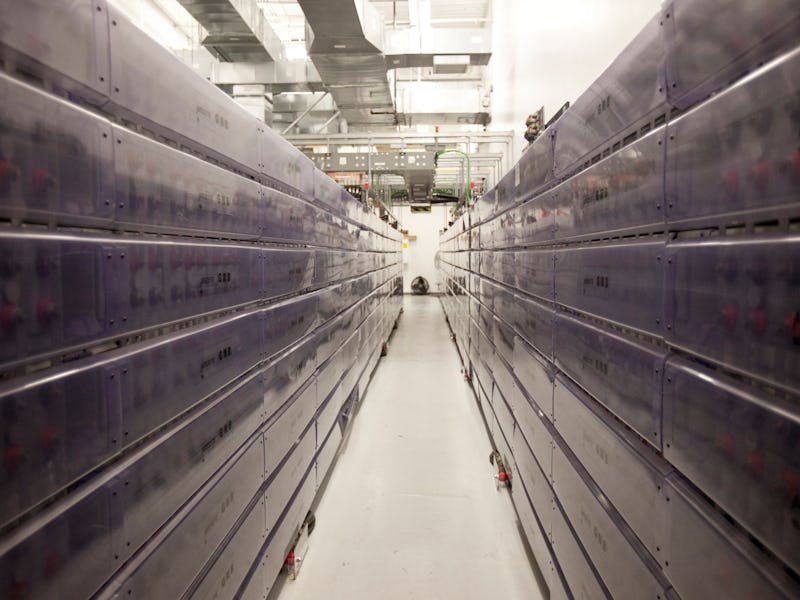Two Bits of Futuristic Tech Are Taking Batteries to the Next Level
And the ingredients sound like a trip to the beach.

Hydrogen is the fuel of the future, and today a team of researchers from Stanford University has brought us one step closer to using water to power our cars.
The tech takes nanolayers of bismuth vanadate, a compound used to make yellow pigments, and uses it as a solar cell to split water into hydrogen for fuel. And Yi Cui, a chemist from Stanford University, hasn’t stopped at improving hydrogen splitting. He is also working on creating the batteries that will be needed to hold the energy generated by solar power.
“Solar and wind farms should be able to provide around-the-clock energy for the electric grid, even when there’s no sunlight or wind,” says Cui. “That will require inexpensive batteries and other low-cost technologies big enough to store surplus clean energy for use on demand.”
One of the big issues with using hydrogen as a fuel is that it usually takes fossil fuels to create enough energy to force the molecules to separate. In the research published in Science Advances, Cui and his team covered a 200-nanometer layer of bismuth vanadate with cones of silicone and layered it on perovskite, another cheap photovoltaic.
Bismuth vanadate is the inorganic compound with the formula BiVO4. It is a bright yellow solid.
Over ten hours, the cell converted solar to hydrogen at a roughly six percent efficiency rate, a significant improvement from other solar to hydrogen conversions.
“I would say it’s certainly impressive,” says Ian Sharp, a photovoltaic researcher at the Lawrence Berkley National Lab, “but I’m not sure if it’s game-changing.” To really cause an impact, this needs to have a much higher efficiency conversion, and to be stable for 20-30 years, not just on the scale of hours. However, Sharp says, it’s definitely a step in the right direction.
And Cui says that this device has a lot of room to improve. The second part of the equation is the battery to store the power — leading to Cui’s redesign of the zinc-nickel battery. Zinc-nickel batteries are relatively cheap to make, but over time zinc ions form chains across the battery and cause it to short out. To prevent this, Cui and Shougo Higashi, a chemist from Toyota Central R&D Labs Inc, separated the electrodes with plastic and insulted them with carbon.
Although this redesign allows for recharging, the team has run it through only 800 recharge cycles. This is a significant improvement, but your phone has 2,000 to 3,000 recycles.
It might be a while before this research changes the world of energy, but the day that we can power our cars and other tech on just a little water and sunlight may not be too far in the future.